Table of Contents
THE container house collaborates in the current global scenario in which the concern with the environment has been growing in great proportions and companies are “racking their brains” to put into practice issues such as sustainability.
It was thinking about this development model – which seeks to reconcile economic, social and environmental needs in order to guarantee its service indefinitely and to promote social inclusion, economic well-being and the preservation of natural resources – that it is already possible to reuse containers as a housing option and other small businesses. Below are several models of Container House and get inspired!
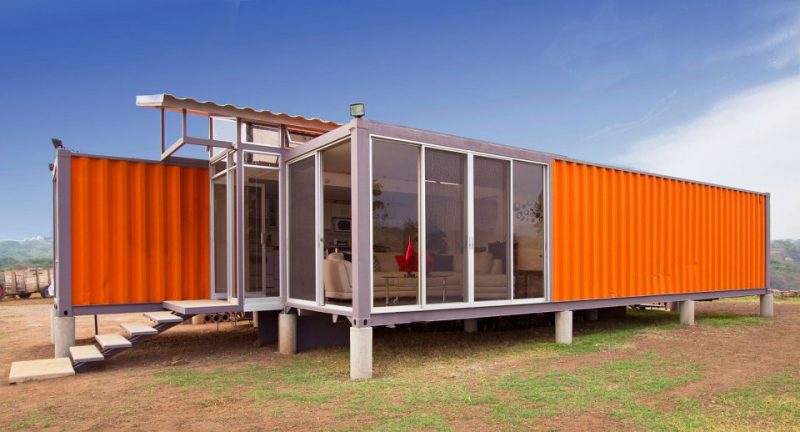
Example of reusing the container at home with a reused material structure.
Where they come from and how to buy containers for home
This container, which is generally large in size and is used for packing and transporting cargo on ships, trains, etc., when it is no longer used for these functions (no commercial use or in disuse) is reused by companies that aim at sustainable development and this is possible mainly because the material does not rust, after all it was made for the sea.
Thanks to its sealing which is all made of aluminum, making it resistant to rust. They can be obtained in specialized stores, such as the Container Ecology Store, a company specialized in the trade of containers for reuse.
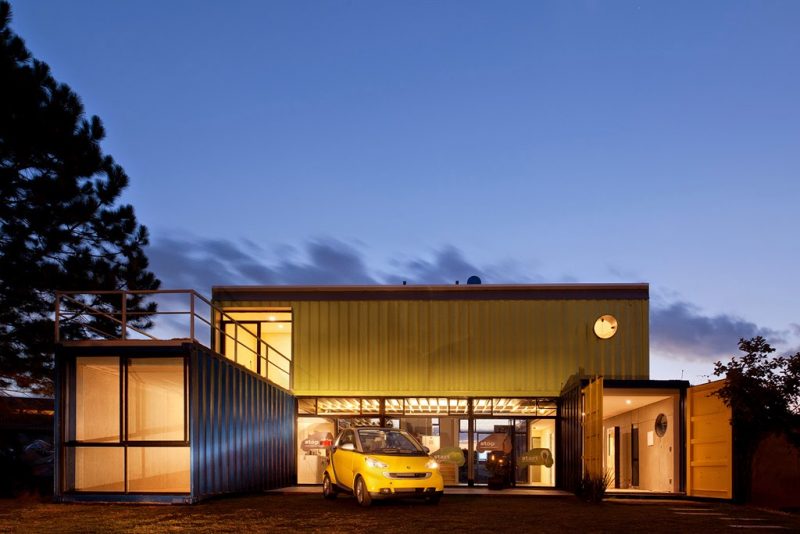
House with reuse of containers in Itajaí
Where did the idea come from
In order to reduce the housing deficit (since the continuous growth of the population is remarkable – migration and overpopulation), building housing in containers is a safe, low-cost and less aggressive option to the environment (does not harm the soil and still prioritizes the natural landscape), because it allows the execution in more difficult terrains, since it does not need large foundations, only drills with little depth to support the structure and fixation.
One of the main characteristics of a container is the fact that it is mobile, that is, in addition to easy transportation, it can still be “connected” to other containers, depending on the chosen project. Through these modular fitting systems, the structures are significantly expanded.
This type of constructive solution is already a trend in the USA and in European countries, such as the Netherlands, where a university village was built as a housing solution for university students. In Finland and Norway, countries with a very cold climate, have an abundance of raw materials. It is a good option for countries that suffer from natural disasters (earthquakes) and can still serve as temporary accommodation for large populations.
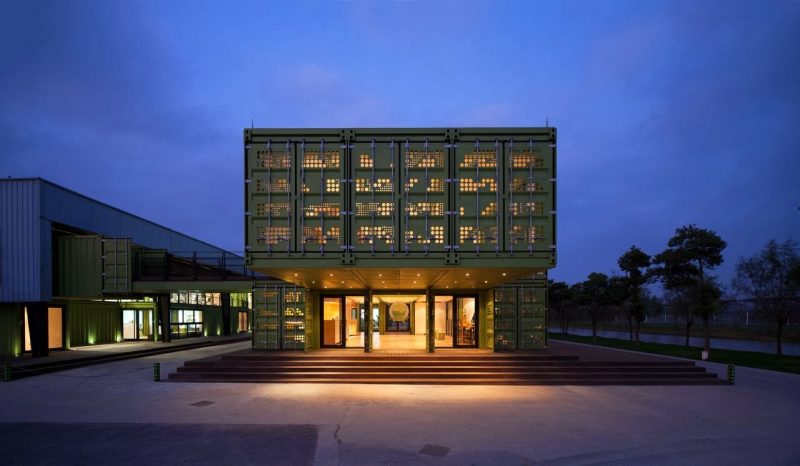
Building made of containers, an example of collective housing for container reuse
The container is safe from bad weather (any very accentuated weather phenomenon, such as strong winds, storms, drought). And in 1991, in the Golgo War, the containers served as transportation for Iraqi prisoners, and although locked there, they still had ventilation through holes made in the structure.
In Brazil, it is still a little explored technique in terms of mechanization and prefabrication, in addition to being a tropical country that requires technical care, such as temperature control treatments and acoustic insulation. Although this idea is not yet common in the country, in Palhoça, municipality of Santa Catarina, it is already possible to see this type of change in society’s behavior.
How the project should be
The thermoacoustic insulation of the structure is possible thanks to the application of glass wool (material made of thin filaments of glass, used as an insulator in moldable structures, packaging material etc.) or rock wool (thermal insulating material, non-combustible, that is, it does not burn and does not rot, it does not rot or corrupt. It differs from other insulators, as it is a fire resistant material, with a melting point above 1200 ºC).
When placed in “sandwiches”, that is, in the gaps between the structure and the plates that can be cementitious (cements with light minerals) or OSB (from English, Oriented Strand Board) which is a type of material derived from wood, the passage also allows the placement of electrical and water sanitary tubes (related to the water in the bathroom (s)).
Without these proper treatments, a container will only be a dark and unventilated environment. In addition, after being restored, the containers that are ready for housing already come with a rainwater storage system, that is, rainwater collection, solar energy panels and waste treatment system.
The lining of containers can still be smooth, with wood or cement boards (already mentioned). The floors can be laminated (it is said of wood or metal plate produced by the compression of sheets), in bamboo or even use recycled tires. The furniture can have built-in tables and benches to optimize the space.
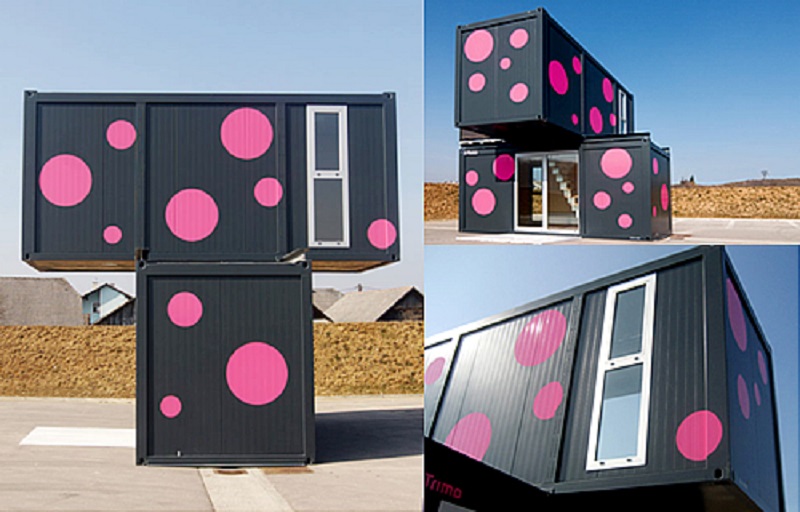
Pink container house
A container housing project in addition to being functional requires less manpower, as well as generating much less rubble than traditional works (the reduction reaches almost 30%). For example, a traditional 100 m2 project generates about 30 buckets, while a container generates only 4. This type of project still generates savings in natural resources, such as water, sand, iron, among others.
One of the only maintenance that should be done to maintain a nice aesthetic / visual standard is to paint the residence every five years.
Container Price
You container prices they can vary for several reasons, which will define your price will almost always be the region where you are, because for example regions close to ports it is easier to find containers at good costs.
Another factor that can influence the price is also the type and size of the container you are looking for. Besides where you are looking for the same. You can search for it even in specialized companies, as well as on sites like OLX, Mercado Livre and others equally known.
O container price although it varies a lot, a value can be stipulated around:
- 6 meter high Container Dry: R $ 5,000.00 to R $ 6,500.00;
- 7-meter-high Dry Container: R $ 6,500.00 to R $ 8,000.00;
- Container Reefer 20 meters high: R $ 11,000.00 to 15,000;
As previously mentioned, this will all depend on where you are looking for this container, and in what region you are.
Container House Pictures
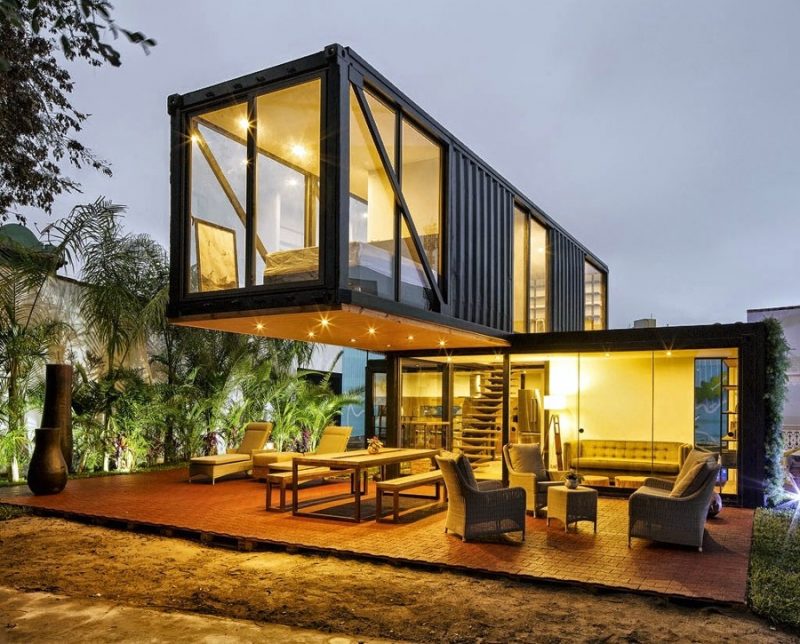
High standard container house, a reuse container.
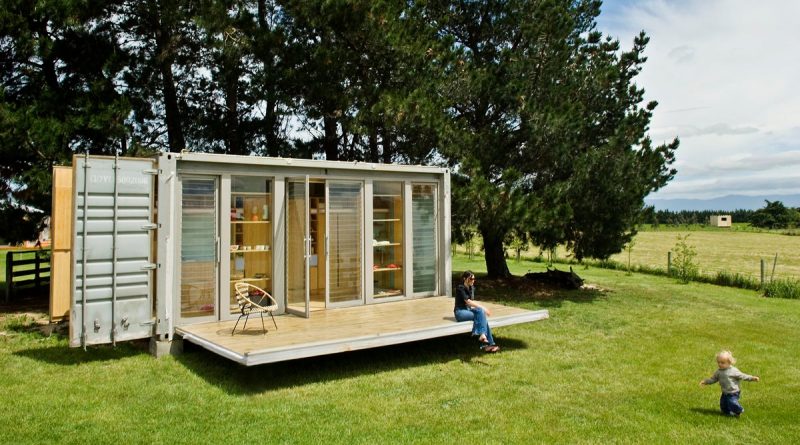
Small house made of reused container
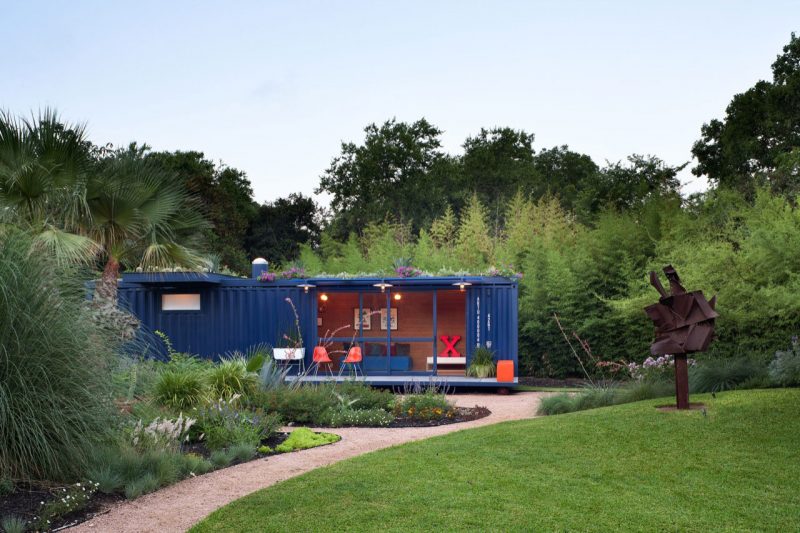
Container house in rural area
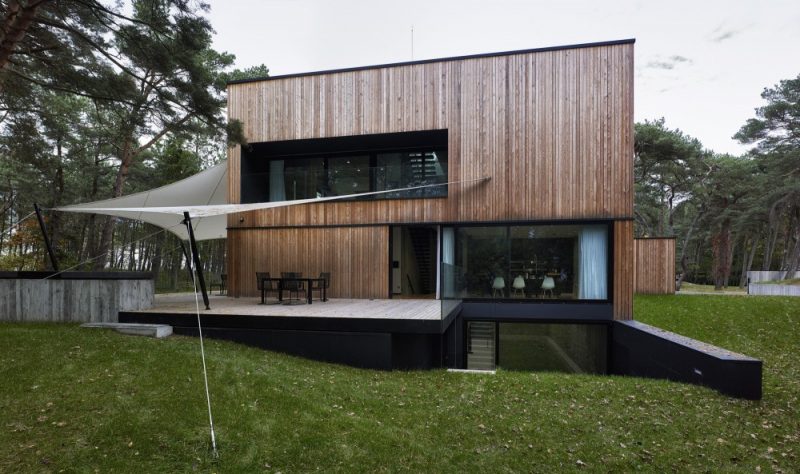
Container house with wood











